Hi everyone!
I'm building my first computer, and a bit boldly I chose to do it from purely used parts, mostly for sustainability reasons, though that can of course be a big factor in the problems I'm experiencing now!
So I assembled everything in the case, turned it on, and all the fans were spinning and LEDs lighting up which seemed good, but nothing was showing on the screen which I learned means it is not POSTing.
I found some troubleshooting guides and by following them tried then removing it from the case and assembling the computer on top of the motherboard's box. This didn't seem to work at first, but by a bit of a fluke I found a position where it POSTs. I've reproduced it and played with many different things to gather knowledge and understanding, which I got somewhat successfully, but I'm not 100% sure how to explain the phenomena I am experiencing and I was hoping this community could be of help in either spotting an obvious oversight I made as a newbie, or help me with what the best next steps are for troubleshooting?
I will post pictures and my build components in a list below, but first here is the info I have from my experimenting:
1. The only way I have got it to POST is when I have my graphics card in the PCI 2.0 (furthest down on my mobo) slot, and the metal bar that sticks out further down than the mobo is tall, rests on the box, therefore lifting up the mobo.
2. If I let the metal bar from the graphics card rest outside the box so the mobo is flush with the motherboard box, it doesn't POST
3. If I put my graphics card in the PCI 3.0 slot (the one above, which is also the one it SHOULD be used on as far as I know), and let it rest on the box, the fans slow down in the way that it's done when it POSTs (when it doesn't POST the fans just stay at full speed until I turn it off), but nothing shows on screen
4. I have once had the fans slow down when I had it in the PCI 3.0 slot and flush with the box, similar to above in nr. 3, but all other times the fans didn't even slow down
5. Moving it from flush with the box to on the box or the other way around after powering it on didn't cause any differences and/or crashes
6. Removing the graphics card completely (which also means it's flush with the box) also doesn't POST
7. I think two times the CPU fan didn't start when I turned on the computer, once I checked the CPU power cable was properly in restarted and it worked, the second time I just restarted and it worked, which is pretty dodgy though!
My best guess right now is that there's a problem with the motherboard, and I should try getting a new one, but as I said above I'm aware I'm a newbie and maybe completely misdiagnosing it.
I also ordered a motherboard "buzzer", so I can get the beep codes which should come one of these days, so hopefully that can help a bit too
I also think it's worth noting that:
1. My power supply is only 400W when pcpartpicker.com says it needs 330, I don't know if that is enough margin for a pc
2. The main 24pin power cable for the motherboard seems to be hollow inside one of the 24 pins, I'm not sure if this is normal?
In the pictures below you can see the 5 positions:
1. No graphics card in
2. Graphics card resting on box in PCI 2.0 slot
3. Motherboard flush with box in PCI 2.0 slot
4. Motherboard flush with box in PCI 3.0 slot
5. Graphics card resting on box in PCI 3.0 slot
and in the last picture you can see the 24 pin power cable for the motherboard.
My components are:
CPU: AMD Ryzen 7 1800X 3.6 GHz 8-Core Processor
Motherboard: ASRock B450M Steel Legend Micro ATX AM4 Motherboard
Memory: G.Skill Aegis 16 GB (1 x 16 GB) DDR4-3000 CL16 Memory
Storage: Samsung PM863 960 GB 2.5" Solid State Drive
Video Card: Asus GeForce GTX 660 Ti 2 GB Video Card
Case: Fractal Design Focus G ATX Mid Tower Case
And then just a big thank you in advance if you decide to help me out of my pickle!
I'm building my first computer, and a bit boldly I chose to do it from purely used parts, mostly for sustainability reasons, though that can of course be a big factor in the problems I'm experiencing now!
So I assembled everything in the case, turned it on, and all the fans were spinning and LEDs lighting up which seemed good, but nothing was showing on the screen which I learned means it is not POSTing.
I found some troubleshooting guides and by following them tried then removing it from the case and assembling the computer on top of the motherboard's box. This didn't seem to work at first, but by a bit of a fluke I found a position where it POSTs. I've reproduced it and played with many different things to gather knowledge and understanding, which I got somewhat successfully, but I'm not 100% sure how to explain the phenomena I am experiencing and I was hoping this community could be of help in either spotting an obvious oversight I made as a newbie, or help me with what the best next steps are for troubleshooting?
I will post pictures and my build components in a list below, but first here is the info I have from my experimenting:
1. The only way I have got it to POST is when I have my graphics card in the PCI 2.0 (furthest down on my mobo) slot, and the metal bar that sticks out further down than the mobo is tall, rests on the box, therefore lifting up the mobo.
2. If I let the metal bar from the graphics card rest outside the box so the mobo is flush with the motherboard box, it doesn't POST
3. If I put my graphics card in the PCI 3.0 slot (the one above, which is also the one it SHOULD be used on as far as I know), and let it rest on the box, the fans slow down in the way that it's done when it POSTs (when it doesn't POST the fans just stay at full speed until I turn it off), but nothing shows on screen
4. I have once had the fans slow down when I had it in the PCI 3.0 slot and flush with the box, similar to above in nr. 3, but all other times the fans didn't even slow down
5. Moving it from flush with the box to on the box or the other way around after powering it on didn't cause any differences and/or crashes
6. Removing the graphics card completely (which also means it's flush with the box) also doesn't POST
7. I think two times the CPU fan didn't start when I turned on the computer, once I checked the CPU power cable was properly in restarted and it worked, the second time I just restarted and it worked, which is pretty dodgy though!
My best guess right now is that there's a problem with the motherboard, and I should try getting a new one, but as I said above I'm aware I'm a newbie and maybe completely misdiagnosing it.
I also ordered a motherboard "buzzer", so I can get the beep codes which should come one of these days, so hopefully that can help a bit too
I also think it's worth noting that:
1. My power supply is only 400W when pcpartpicker.com says it needs 330, I don't know if that is enough margin for a pc
2. The main 24pin power cable for the motherboard seems to be hollow inside one of the 24 pins, I'm not sure if this is normal?
In the pictures below you can see the 5 positions:
1. No graphics card in
2. Graphics card resting on box in PCI 2.0 slot
3. Motherboard flush with box in PCI 2.0 slot
4. Motherboard flush with box in PCI 3.0 slot
5. Graphics card resting on box in PCI 3.0 slot
and in the last picture you can see the 24 pin power cable for the motherboard.
My components are:
CPU: AMD Ryzen 7 1800X 3.6 GHz 8-Core Processor
Motherboard: ASRock B450M Steel Legend Micro ATX AM4 Motherboard
Memory: G.Skill Aegis 16 GB (1 x 16 GB) DDR4-3000 CL16 Memory
Storage: Samsung PM863 960 GB 2.5" Solid State Drive
Video Card: Asus GeForce GTX 660 Ti 2 GB Video Card
Case: Fractal Design Focus G ATX Mid Tower Case
And then just a big thank you in advance if you decide to help me out of my pickle!
Attachments
-
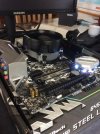 signal-2021-04-05-123656_001.jpeg324.5 KB · Views: 6
signal-2021-04-05-123656_001.jpeg324.5 KB · Views: 6 -
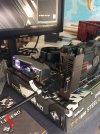 signal-2021-04-05-123656_002.jpeg327.2 KB · Views: 7
signal-2021-04-05-123656_002.jpeg327.2 KB · Views: 7 -
 signal-2021-04-05-123656_003.jpeg321.3 KB · Views: 7
signal-2021-04-05-123656_003.jpeg321.3 KB · Views: 7 -
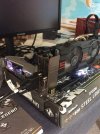 signal-2021-04-05-123656_004.jpeg341.4 KB · Views: 8
signal-2021-04-05-123656_004.jpeg341.4 KB · Views: 8 -
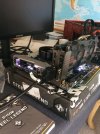 signal-2021-04-05-123656_005.jpeg328 KB · Views: 8
signal-2021-04-05-123656_005.jpeg328 KB · Views: 8 -
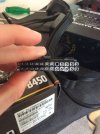 signal-2021-04-05-183137.jpeg271.4 KB · Views: 10
signal-2021-04-05-183137.jpeg271.4 KB · Views: 10